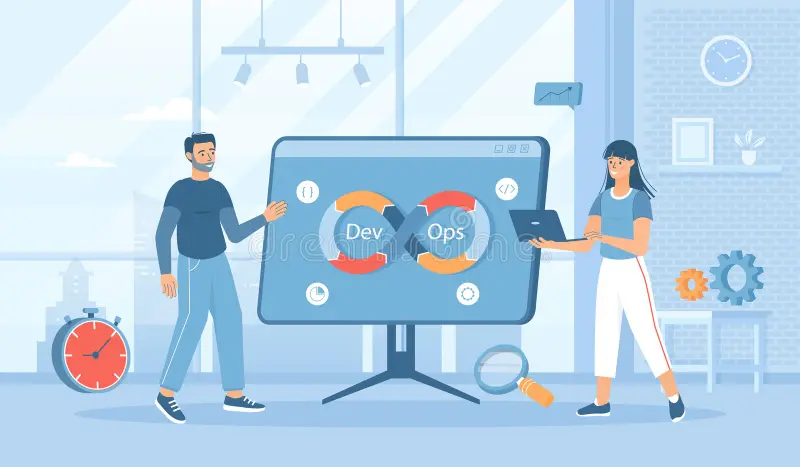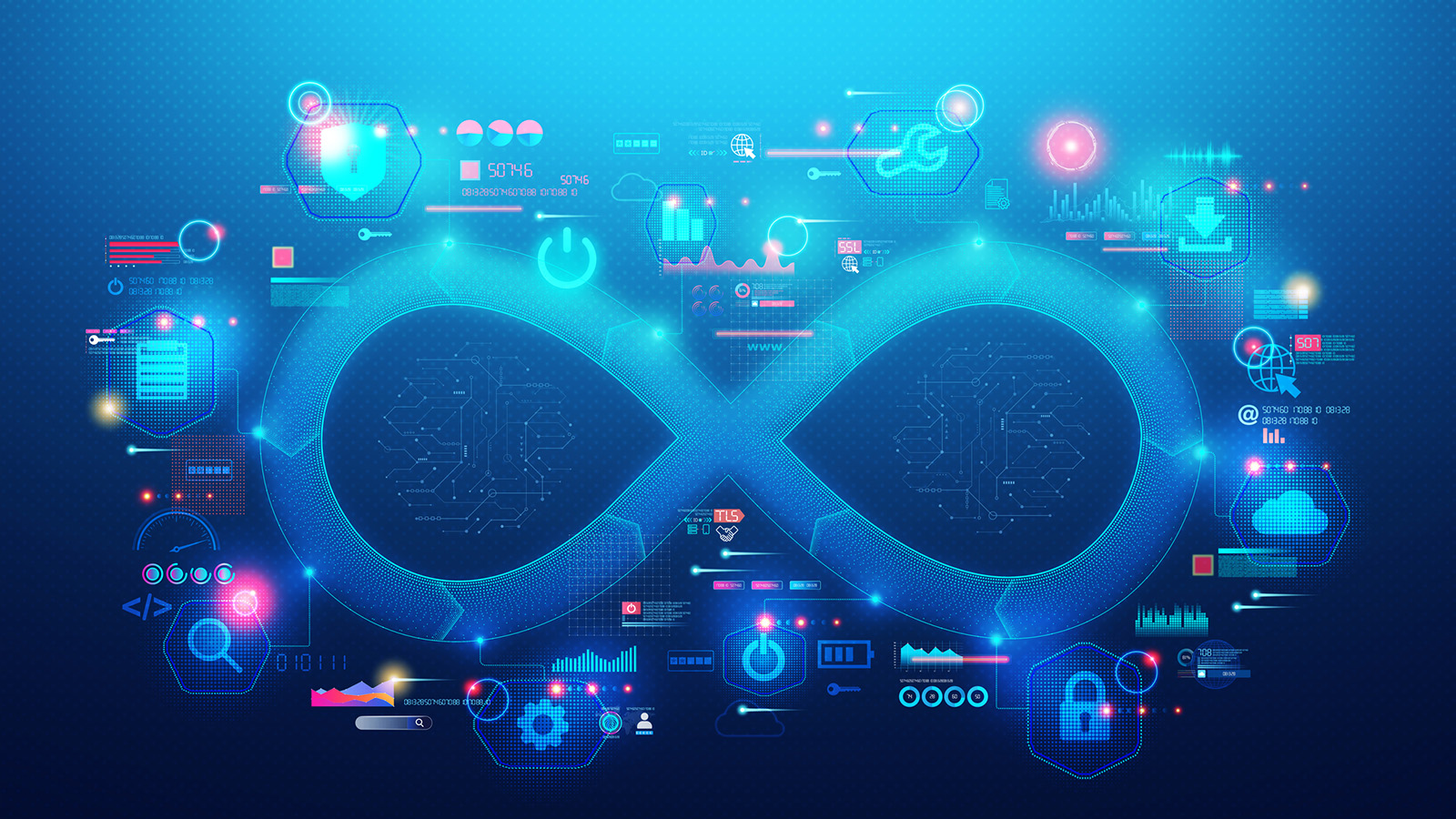Explore how Cognitive DevOps is transforming continuous delivery in the AI-driven era. Learn how intelligent automation, predictive analytics, and machine learning are powering DevOps 3.0 — enabling self-optimizing, data-driven software pipelines.

-
Introduction: The Evolution of DevOps Thinking
-
The Shift from Automation to Intelligence
-
Cognitive Collaboration: Developers and Machines as Co-Engineers
-
Predictive Delivery and Continuous Intelligence
-
The Cognitive Pipeline Architecture
-
AI in Testing and Quality Assurance
-
DevSecOps in the Cognitive Age
-
Human Leadership in a Machine-Led Era
-
The Business Impact of Cognitive DevOps
-
Challenges on the Path to Cognitive DevOps
-
The Future Vision: Autonomous DevOps Ecosystems
-
Conclusion: Building the Future of Continuous Intelligence
DevOps 3.0 — The Cognitive DevOps Era, where AI, data intelligence, and autonomous systems transform pipelines into self-learning ecosystems.
Introduction: The Evolution of DevOps Thinking
In the last decade, DevOps has evolved from a buzzword to a business-critical discipline that defines how software innovation reaches the market. From the early days of bridging silos between development and operations to the automation revolution of DevOps 2.0, the journey has been marked by one clear goal — speed without sacrificing stability.
But the next chapter, DevOps 3.0, redefines the paradigm.
This is the Cognitive Era — where AI, data intelligence, and autonomous systems transform pipelines from reactive workflows into predictive, self-optimizing ecosystems.
In DevOps 3.0, the developer is no longer just a coder or a release engineer; they are a strategic systems architect, harnessing machine learning and analytics to create intelligent feedback loops that continuously learn, adapt, and evolve.
This isn’t just about automation anymore. It’s about cognition — giving systems the ability to think, reason, and act proactively.
1. The Shift from Automation to Intelligence
Traditional DevOps focused on automating manual tasks: code integration, deployment pipelines, testing, and monitoring. While this boosted efficiency, it also introduced a new challenge — complexity. Modern systems generate thousands of metrics per second, logs across distributed microservices, and unpredictable user behaviors.
Automation alone cannot interpret this scale of data.
That’s where the shift begins — from automated to autonomous.
AI-Driven DevOps Pipelines
DevOps 3.0 introduces machine learning models that:
- Analyze build failures and auto-suggest fixes.
- Detect anomaly patterns in deployments before users are affected.
- Optimize resource allocation in real time using predictive analytics.
- Recommend code rollbacks or performance improvements.
Instead of human engineers reacting to incidents, intelligent DevOps systems predict and prevent them.
This creates a new type of developer — the cognitive DevOps engineer — one who builds intelligence into the delivery pipeline itself.
2. Cognitive Collaboration: Developers and Machines as Co-Engineers
In the DevOps 3.0 landscape, humans and AI systems form a symbiotic partnership.
Developers design, innovate, and architect logic.
AI systems process vast datasets, recognize patterns, and optimize performance beyond human reach.
This collaboration enhances:
- Incident Response Time: AI-based monitoring tools like Datadog, Splunk, and Dynatrace detect deviations faster than manual dashboards.
- Release Confidence: Predictive models estimate the likelihood of deployment success before production rollout.
- Team Productivity: AI copilots assist with configuration, YAML syntax validation, and even pipeline scripting.
By merging human creativity with computational precision, DevOps becomes a living system — learning, improving, and evolving with every sprint.
3. Predictive Delivery: From Continuous Integration to Continuous Intelligence
In DevOps 3.0, pipelines are not static flows of code — they are dynamic ecosystems powered by data feedback loops.
Every build, test, and deploy phase generates telemetry that feeds back into machine learning models.
This process, called Continuous Intelligence (CIx), enables:
- Proactive Error Detection: Models predict probable defects before integration.
- Adaptive Testing: Test cases evolve based on changing user behavior.
- Resource Forecasting: Cloud infrastructure scales ahead of predicted demand spikes.
For instance, predictive analytics can identify the best deployment window based on historical performance, user load patterns, and system health metrics — resulting in zero-downtime releases and optimal resource usage.
4. The Cognitive Pipeline Architecture

To enable DevOps 3.0, enterprises are re-architecting their pipelines with cognitive layers.
A typical architecture includes:
- AI-Powered Monitoring Layer: Integrates data from performance, security, and application logs.
- Automated Decision Layer: Uses ML models to analyze risk and trigger automated rollbacks or fixes.
- Continuous Learning Layer: Updates models with post-deployment feedback to refine future releases.
- Collaborative Dashboard: Provides explainable insights for developers to validate AI-driven actions.
This approach ensures that every deployment improves the intelligence of the next one — turning software delivery into an ever-evolving organism.
5. AI in Testing and Quality Assurance
Quality assurance is no longer a manual gate — it’s an intelligent guardian integrated into every stage of the pipeline.
AI-powered testing tools leverage natural language processing and computer vision to create, run, and refine tests automatically.
- Visual Testing: AI detects UI inconsistencies across devices.
- Predictive Bug Detection: ML models identify risky code areas before they cause failures.
- Self-Healing Tests: Automated scripts update themselves when UI or workflow changes occur.
The result is ultra-reliable, data-validated software that ships faster and performs flawlessly under variable conditions.
6. DevSecOps in the Cognitive Age
Security cannot lag behind innovation — and in DevOps 3.0, it doesn’t.
AI-integrated DevSecOps brings real-time vulnerability scanning, code analysis, and behavior-based threat prediction.
Modern tools now:
- Detect anomalous network behavior and quarantine suspicious containers automatically.
- Recommend patches and security updates based on exploit intelligence feeds.
- Integrate with compliance frameworks (GDPR, ISO, SOC2) for continuous certification readiness.
This means every deployment is secure by design, not by afterthought.
Security becomes a continuous, intelligent process — an invisible layer of trust baked into every release.
7. Human Leadership in a Machine-Led Era
The rise of intelligent DevOps doesn’t eliminate human leadership; it redefines it.
DevOps engineers evolve into system strategists, orchestrating human–AI collaboration.
Key traits of tomorrow’s DevOps leaders:
- Data Fluency: Understanding how ML models interpret system behavior.
- Empathetic Leadership: Balancing automation with the human factor — creativity, ethics, and intuition.
- Cross-Disciplinary Thinking: Blending development, data science, and operations knowledge.
This mindset transforms DevOps from an operational function into a strategic business enabler.
8. The Business Impact: Beyond Deployment Metrics
The cognitive DevOps shift isn’t just a technical evolution — it’s a strategic business transformation.
Organizations embracing DevOps 3.0 achieve:
- 50% faster time-to-market through predictive automation.
- 70% fewer production incidents due to AI-driven anomaly detection.
- Enhanced developer satisfaction, as teams focus on innovation, not firefighting.
- Reduced cloud costs, thanks to resource optimization via predictive scaling.
The ROI extends beyond numbers — it’s about brand trust, operational resilience, and digital leadership.
9. Challenges on the Path to Cognitive DevOps
The transformation comes with real challenges:
- Data Governance: Training models responsibly while maintaining privacy and compliance.
- Explainability: Ensuring AI-driven decisions remain transparent and auditable.
- Cultural Shift: Encouraging teams to trust and collaborate with machine intelligence.
However, these challenges are surmountable with the right frameworks, ethics, and education — marking the difference between early adopters and laggards.
10. The Future Vision: Autonomous DevOps Ecosystems

Looking ahead, DevOps 3.0 sets the stage for DevOps 4.0 — where systems not only self-heal but self-design.
Imagine:
- Pipelines that evolve autonomously based on performance data.
- AI agents that suggest architectural redesigns.
- Predictive compliance engines that adapt to regulatory changes.
This is where DevOps becomes Digital Intelligence Infrastructure — the invisible engine of every future enterprise.
Conclusion: Building the Future of Continuous Intelligence
DevOps 3.0 is not about replacing humans — it’s about amplifying human potential through intelligence.
In the Cognitive Era, success lies in merging creativity with computation, intuition with analytics, and automation with empathy.
Organizations that embrace this evolution will not just deploy software faster — they’ll innovate smarter, operate safer, and lead stronger.


